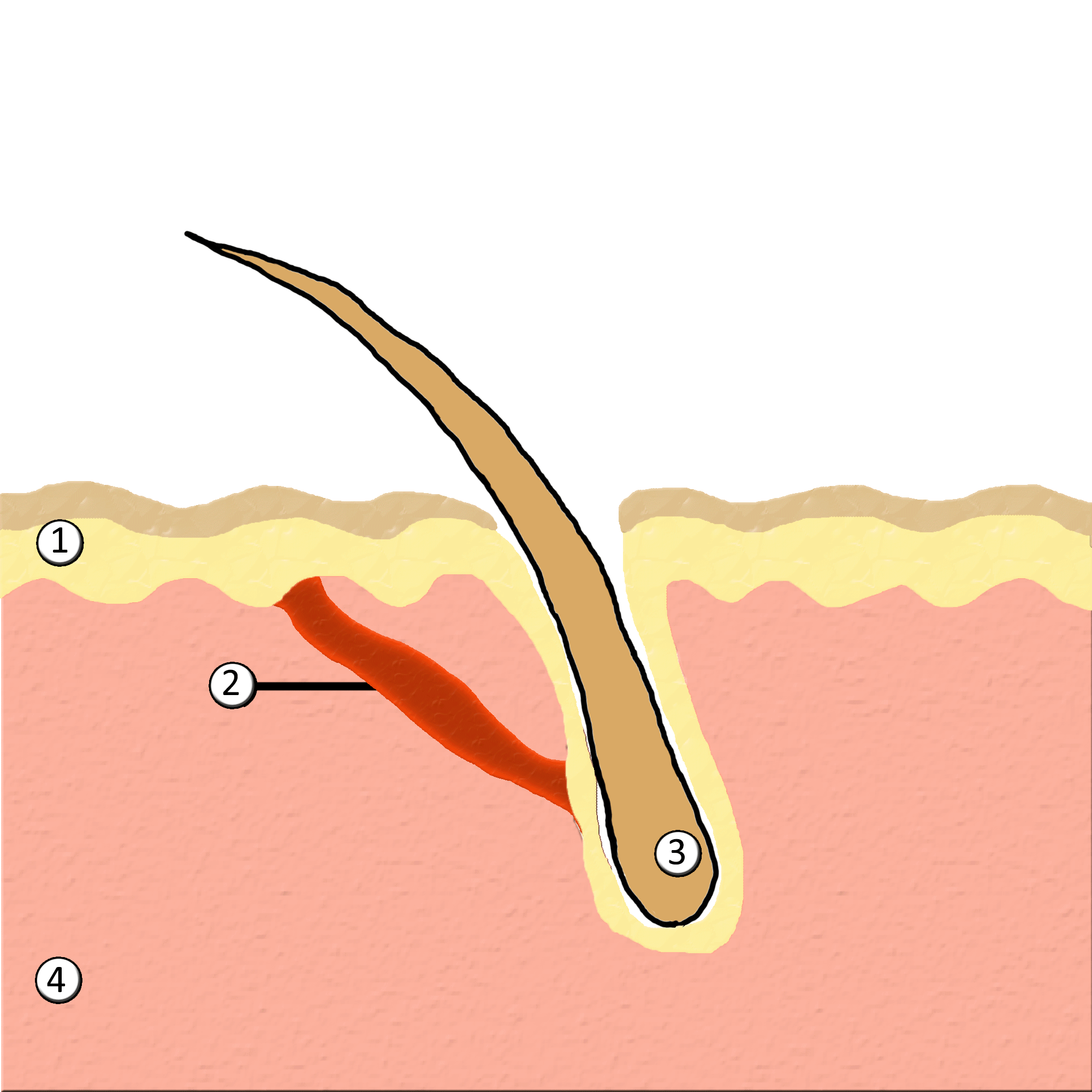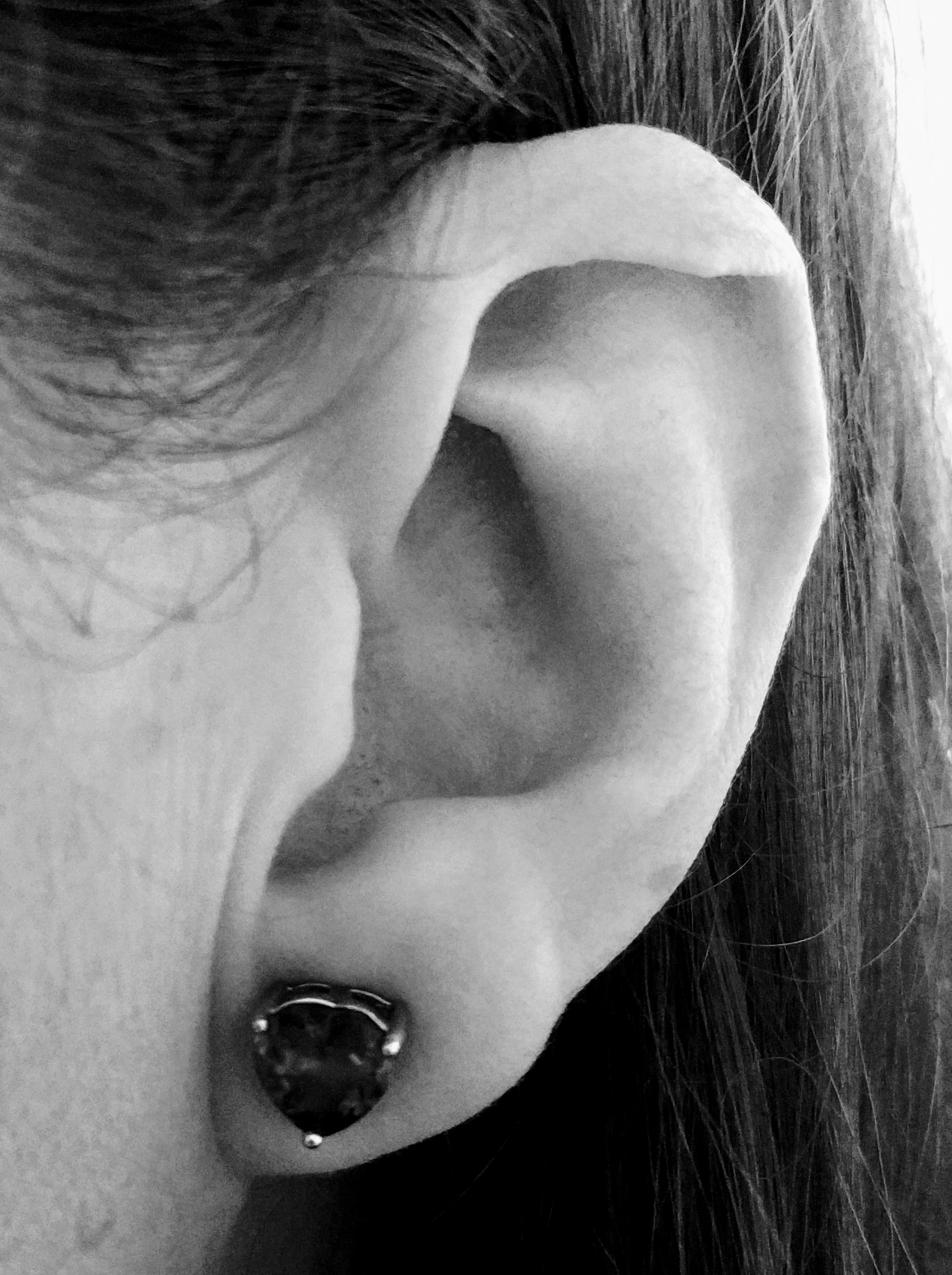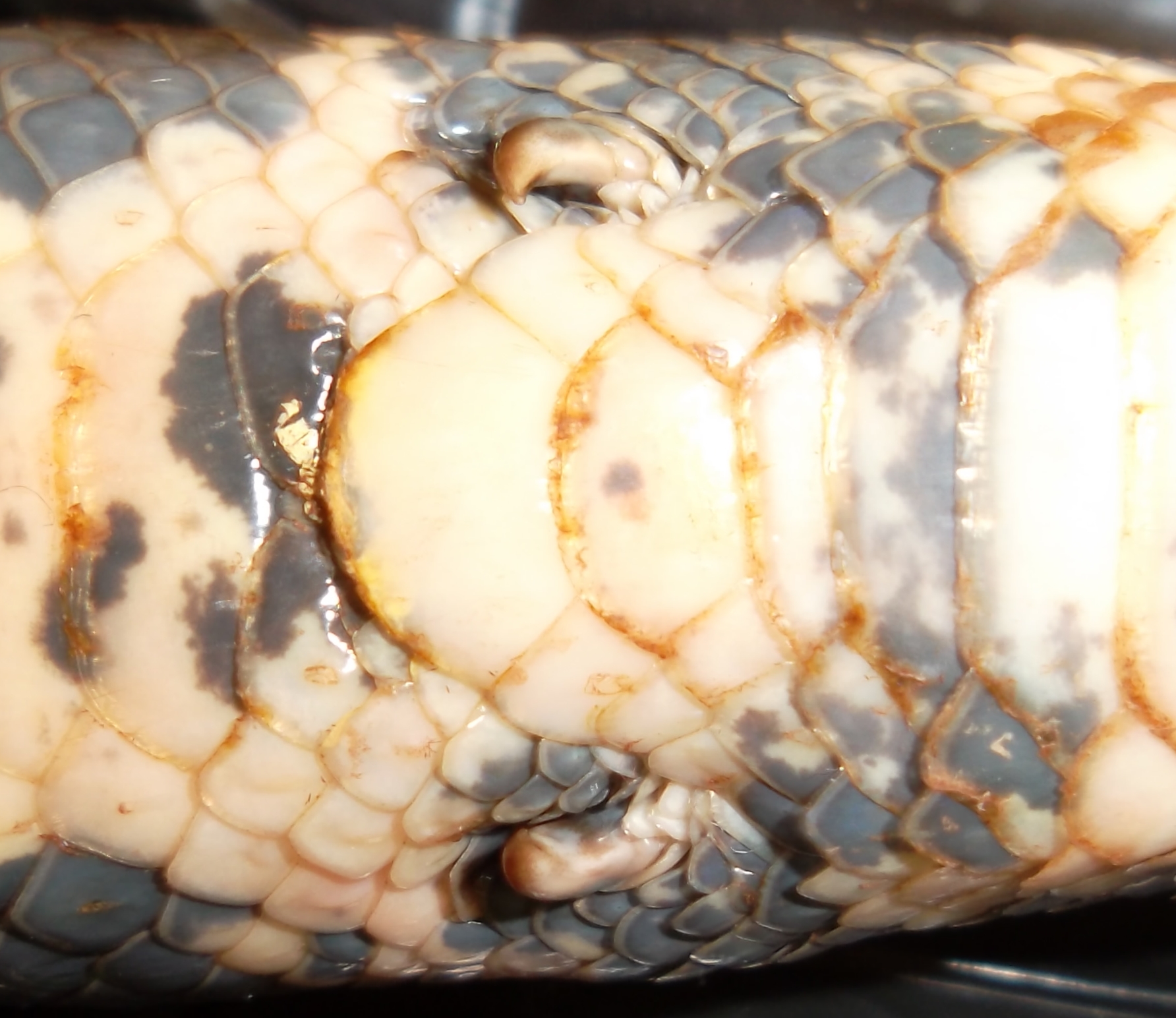|
Vestigial Response
A vestigial response or vestigial reflex in a species is a response that has lost its original function. In humans, vestigial responses include ear perking, goose bumps and the hypnic jerk. In humans Ear perking It has been observed that some people have slight protrusions on the outer ear (also known as the auricle). These protrusions tend towards the top of the auricle. This has been tagged and coined Darwin's tubercle of the auricle. This phenomenon agrees with the accepted scientific explanation: the incidence of tubercles of the auricle among humans, are vestigial structures testifying to our evolutionary past. They are a throwback to the pointed ears of many mammals and just one more vestigial trace of human evolutionary history. The focus on this part of the human anatomy has finally been followed by a much later observation testifying to our evolutionary past. The subsequent observation concerns an automatic ear-perking response seen, for example, in dogs when start ... [...More Info...] [...Related Items...] OR: [Wikipedia] [Google] [Baidu] |
Vestigiality
Vestigiality is the retention, during the process of evolution, of genetically determined structures or attributes that have lost some or all of the ancestral function in a given species. Assessment of the vestigiality must generally rely on comparison with homologous features in related species. The emergence of vestigiality occurs by normal evolutionary processes, typically by loss of function of a feature that is no longer subject to positive selection pressures when it loses its value in a changing environment. The feature may be selected against more urgently when its function becomes definitively harmful, but if the lack of the feature provides no advantage, and its presence provides no disadvantage, the feature may not be phased out by natural selection and persist across species. Examples of vestigial structures (also called degenerate, atrophied, or rudimentary organs) are the loss of functional wings in island-dwelling birds; the human vomeronasal organ; and the hi ... [...More Info...] [...Related Items...] OR: [Wikipedia] [Google] [Baidu] |
Goose Bumps
Goose bumps, goosebumps or goose-pimples are the bumps on a person's skin at the base of body hairs which may involuntarily develop when a person is tickled, cold or experiencing strong emotions such as fear, euphoria or sexual arousal. The formation of goose bumps in humans under stress is considered to be a vestigial reflex. Its function in other apes is to raise the body's hair, and would have made human ancestors appear larger to scare off predators or to increase the amount of air trapped in the fur to make it more insulating. The reflex of producing goose bumps is known as piloerection or the pilomotor reflex, or, more traditionally, horripilation. It occurs in many mammals; a prominent example is porcupines, which raise their quills when threatened, or sea otters when they encounter sharks or other predators. Anatomy and biology Goose bumps are created when tiny muscles at the base of each hair, known as ''arrector pili muscles'', contract and pull the hair straight u ... [...More Info...] [...Related Items...] OR: [Wikipedia] [Google] [Baidu] |
Hypnic Jerk
A hypnic jerk, hypnagogic jerk, sleep start, sleep twitch, myoclonic jerk, or night start is a brief and sudden involuntary contraction of the muscles of the body which occurs when a person is beginning to fall asleep, often causing the person to jump and awaken suddenly for a moment. Hypnic jerks are one form of involuntary muscle twitches called myoclonus. Physically, hypnic jerks resemble the "jump" experienced by a person when startled, sometimes accompanied by a falling sensation. Hypnic jerks are associated with a rapid heartbeat, quickened breathing, sweat, and sometimes "a peculiar sensory feeling of 'shock' or 'falling into the void'". It can also be accompanied by a vivid dream experience or hallucination. A higher occurrence is reported in people with irregular sleep schedules. Men have also been known to experience this at a higher rate than women. Moreover, when they are particularly frequent and severe, hypnic jerks have been reported as a cause of sleep-onset in ... [...More Info...] [...Related Items...] OR: [Wikipedia] [Google] [Baidu] |
Auricle (anatomy)
The auricle or auricula is the visible part of the ear that is outside the head. It is also called the pinna (Latin for "wing" or "fin", plural pinnae), a term that is used more in zoology. Structure The diagram shows the shape and location of most of these components: * ''antihelix'' forms a 'Y' shape where the upper parts are: ** ''Superior crus'' (to the left of the ''fossa triangularis'' in the diagram) ** ''Inferior crus'' (to the right of the ''fossa triangularis'' in the diagram) * ''Antitragus'' is below the ''tragus'' * ''Aperture'' is the entrance to the ear canal * ''Auricular sulcus'' is the depression behind the ear next to the head * ''Concha'' is the hollow next to the ear canal * Conchal angle is the angle that the back of the ''concha'' makes with the side of the head * ''Crus'' of the helix is just above the ''tragus'' * ''Cymba conchae'' is the narrowest end of the ''concha'' * External auditory meatus is the ear canal * ''Fossa triangularis'' is the depres ... [...More Info...] [...Related Items...] OR: [Wikipedia] [Google] [Baidu] |
Darwin's Tubercle
Darwin's tubercle (or auricular tubercle) is a congenital ear condition which often presents as a thickening on the helix at the junction of the upper and middle thirds. History This atavistic feature is so called because its description was first published by Charles Darwin in the opening pages of ''The Descent of Man, and Selection in Relation to Sex'', as evidence of a vestigial feature indicating common ancestry among primates which have pointy ears. However, Darwin himself named it the Woolnerian tip, after Thomas Woolner, a British sculptor who had depicted it in one of his sculptures and had first theorised that it was an atavistic feature. Prevalence The feature is present in approximately 10.4% of the Spanish adult population, 40% of adults in India, and 58% of Swedish school children. This acuminate nodule represents the point of the mammalian ear. The trait can potentially be bilateral, meaning present on both ears, or unilateral, where it is present on only one ea ... [...More Info...] [...Related Items...] OR: [Wikipedia] [Google] [Baidu] |
Vestigial Structure
Vestigiality is the retention, during the process of evolution, of genetically determined structures or attributes that have lost some or all of the ancestral function in a given species. Assessment of the vestigiality must generally rely on comparison with homologous features in related species. The emergence of vestigiality occurs by normal evolutionary processes, typically by loss of function of a feature that is no longer subject to positive selection pressures when it loses its value in a changing environment. The feature may be selected against more urgently when its function becomes definitively harmful, but if the lack of the feature provides no advantage, and its presence provides no disadvantage, the feature may not be phased out by natural selection and persist across species. Examples of vestigial structures (also called degenerate, atrophied, or rudimentary organs) are the loss of functional wings in island-dwelling birds; the human vomeronasal organ; and the hin ... [...More Info...] [...Related Items...] OR: [Wikipedia] [Google] [Baidu] |
Natural Selection
Natural selection is the differential survival and reproduction of individuals due to differences in phenotype. It is a key mechanism of evolution, the change in the heritable traits characteristic of a population over generations. Charles Darwin popularised the term "natural selection", contrasting it with selective breeding, artificial selection, which in his view is intentional, whereas natural selection is not. Genetic diversity, Variation exists within all populations of organisms. This occurs partly because random mutations arise in the genome of an individual organism, and their offspring can inherit such mutations. Throughout the lives of the individuals, their genomes interact with their environments to cause variations in traits. The environment of a genome includes the molecular biology in the Cell (biology), cell, other cells, other individuals, populations, species, as well as the abiotic environment. Because individuals with certain variants of the trait tend ... [...More Info...] [...Related Items...] OR: [Wikipedia] [Google] [Baidu] |
Wiley-Blackwell
Wiley-Blackwell is an international scientific, technical, medical, and scholarly publishing business of John Wiley & Sons. It was formed by the merger of John Wiley & Sons Global Scientific, Technical, and Medical business with Blackwell Publishing in 2007.About Wiley-Blackwell John Wiley & Sons, Inc. Wiley-Blackwell is now an imprint that publishes a diverse range of academic and professional fields, including , , , |
Exaptation
Exaptation and the related term co-option describe a shift in the function of a trait during evolution. For example, a trait can evolve because it served one particular function, but subsequently it may come to serve another. Exaptations are common in both anatomy and behaviour. Bird feathers are a classic example. Initially they may have evolved for temperature regulation, but later were adapted for flight. When feathers were first used to aid in flight, that was an exaptive use. They have since then been shaped by natural selection to improve flight, so in their current state they are best regarded as adaptations for flight. So it is with many structures that initially took on a function as an exaptation: once molded for a new function, they become further adapted for that function. Interest in exaptation relates to both the process and products of evolution: the process that creates complex traits and the products (functions, anatomical structures, biochemicals, etc.) that may b ... [...More Info...] [...Related Items...] OR: [Wikipedia] [Google] [Baidu] |
Human Vestigiality
Humans (''Homo sapiens'') are the most abundant and widespread species of primate, characterized by bipedalism and exceptional cognitive skills due to a large and complex brain. This has enabled the development of advanced tools, culture, and language. Humans are highly social and tend to live in complex social structures composed of many cooperating and competing groups, from families and kinship networks to political states. Social interactions between humans have established a wide variety of values, social norms, and rituals, which bolster human society. Its intelligence and its desire to understand and influence the environment and to explain and manipulate phenomena have motivated humanity's development of science, philosophy, mythology, religion, and other fields of study. Although some scientists equate the term ''humans'' with all members of the genus ''Homo'', in common usage, it generally refers to ''Homo sapiens'', the only extant member. Anatomically modern huma ... [...More Info...] [...Related Items...] OR: [Wikipedia] [Google] [Baidu] |







